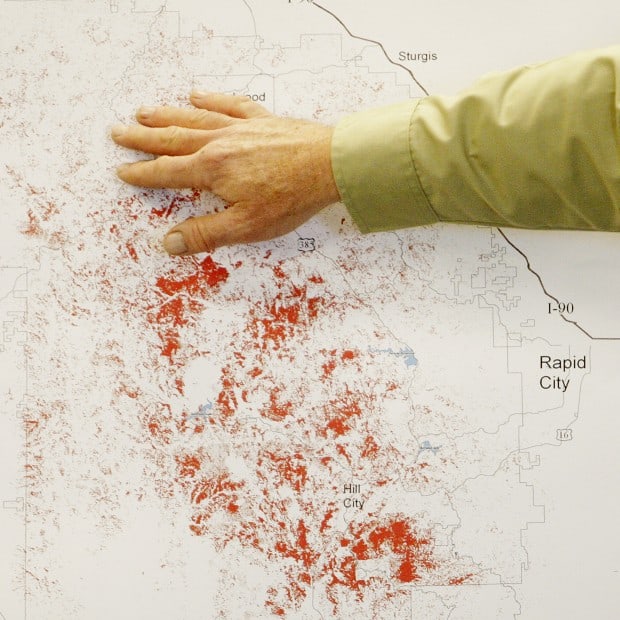Here’s a story from the Rapid City Journal on attempts (with CEQ) to design NEPA documents and decisions in a more flexible way.
Here’s an AP story as well, not so clear about the NEPA, more about the funding.
Black Hills National Forest officials will rely on streamlined regulations and extensive commercial tree thinning in a new attack plan against the mountain pine beetle aimed at protecting vulnerable areas before the bugs hit.
Forest Supervisor Craig Bobzien said Monday in releasing details of the Mountain Pine Beetle Response Project, which was developed over more than a year and included public comments and environmental review, that it would target 248,000 acres of highly vulnerable woodlands within the 1.2-million-acre forest for treatment in advance of beetle.
Commercial thinning would be used on almost half of those acres — 122,000 — over five to seven years to make them more resistant to the destructive bugs and less likely to erupt in wild fires, he said.
“It’s hard work and in many cases it’s expensive work,” Bobzien said. “But it’s worth the effort.”
Bobzien said the response project includes a variety of treatment options and costs about $70 million over the five to seven years. On an annual basis, that is slightly more than current forest management costs weighted heavily toward pine-beetle control work and fuels reduction to reduce the chances of wild fires.
Bobzien said the forest could put additional money to good use through the response project. But its effectiveness is about more than just money, he said.
“We’ll be able to respond much faster and adapt to what’s going on out there in nature. We’ll be able to move at a much-faster pace,” Bobzien said. “This allows us to be out in front of the beetle, which is where we’re most effective.”
The project was authorized by the Healthy Forests Restoration Act of 2003, aimed at a better response to the buildup of hazardous fuels in thick forests and including work against insects and disease. Additional pressure in recent years for streamlined regulations came from private citizens, state and local officials, and the timber industry, as well members of the state’s congressional delegation.
With support from the delegation, the Forest Service worked with the U.S. Environmental Protection Agency and the White House Council on Environmental Quality to find acceptable ways to streamline regulations, Bobzien said.
Rep. Kristi Noem and Sen. John Thune, both Republicans, celebrated Bobzien’s announcement Monday.
This is one of the current efforts at helping the Forest Service use NEPA in ways that facilitate dealing with 21st Century problems. 4FRI is another example, and there are others. Observers will note that the impetus to do this is still there, even though it’s not an R administration.

Thank you for covering this: the demands on the aquifers have been exceeded by demand and can only benefit from removing all but the legacy pine in this ancient and sacred ecosystem where cheatgrass in the foothills exacerbate conditions.
Best wishes to you.
supplies to demand: forgive me.